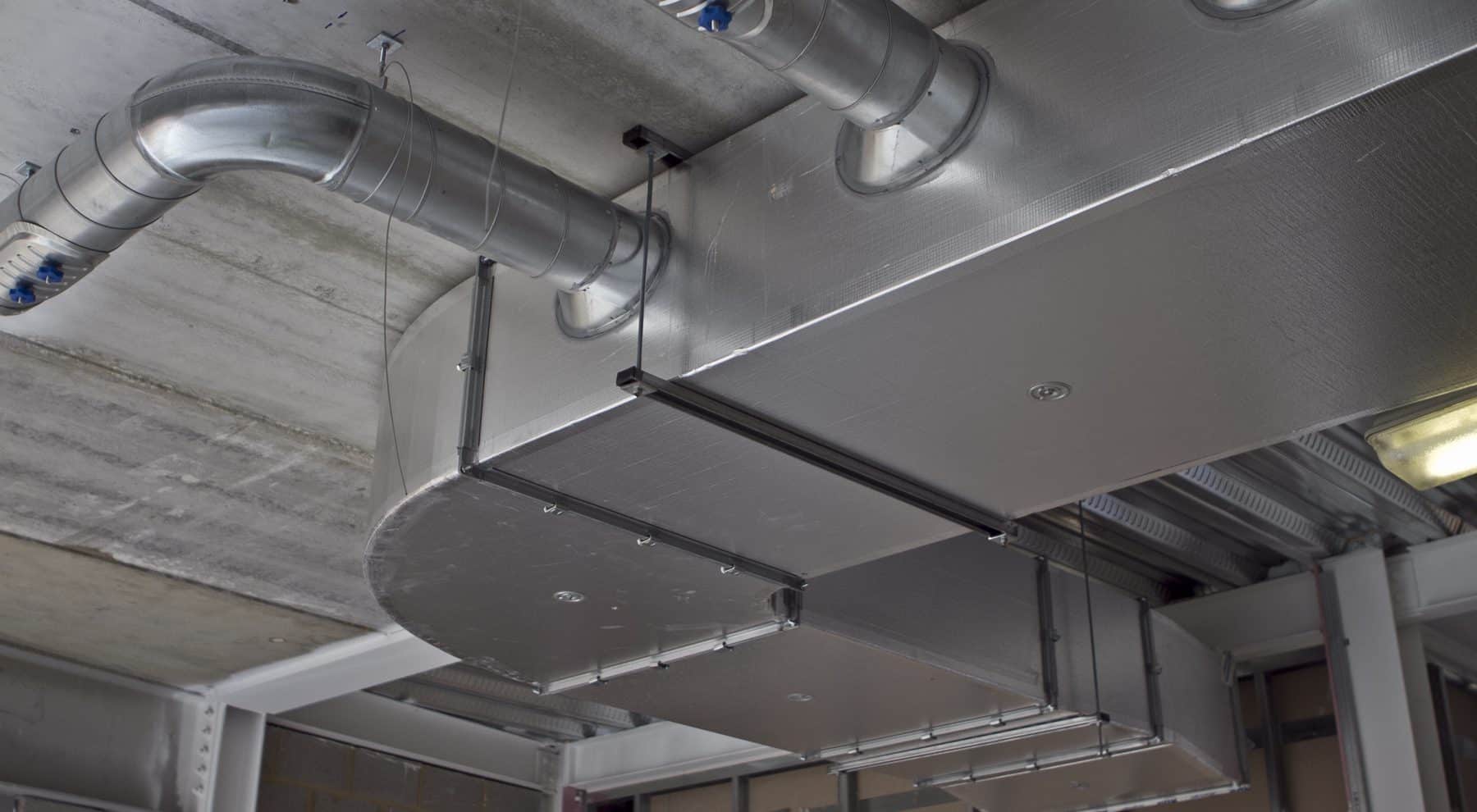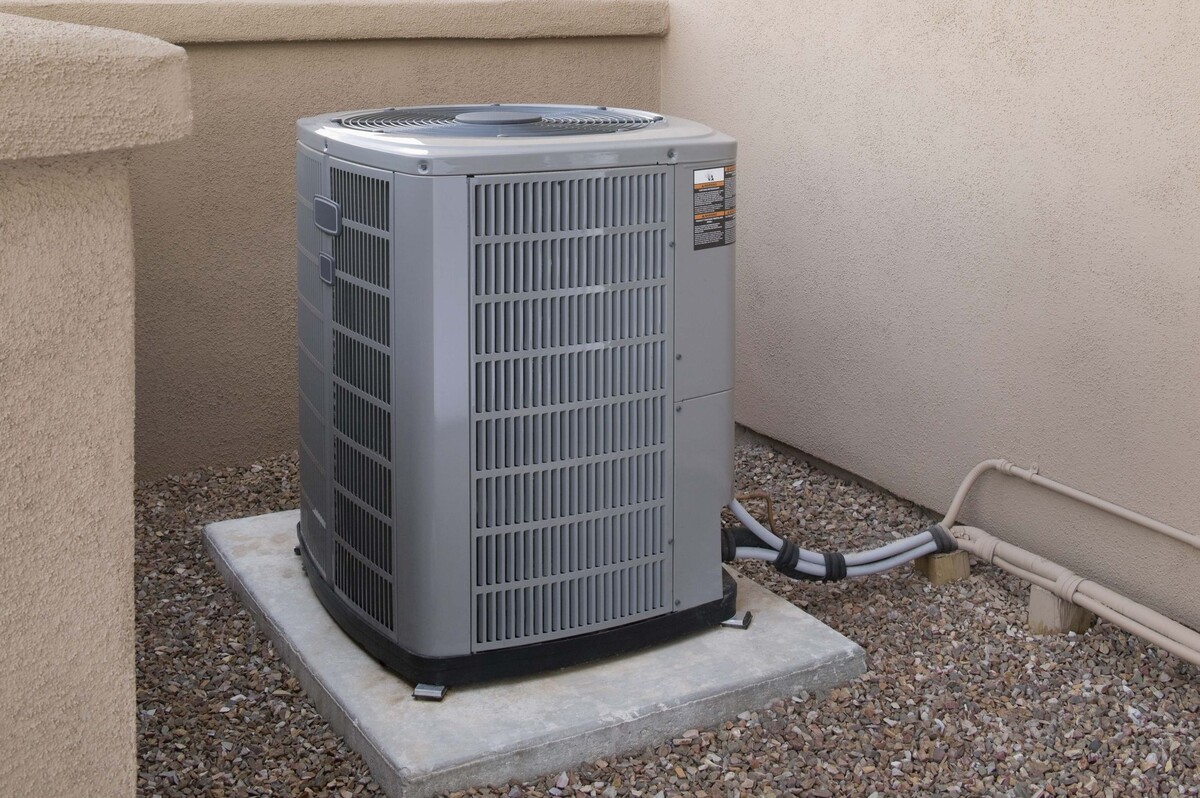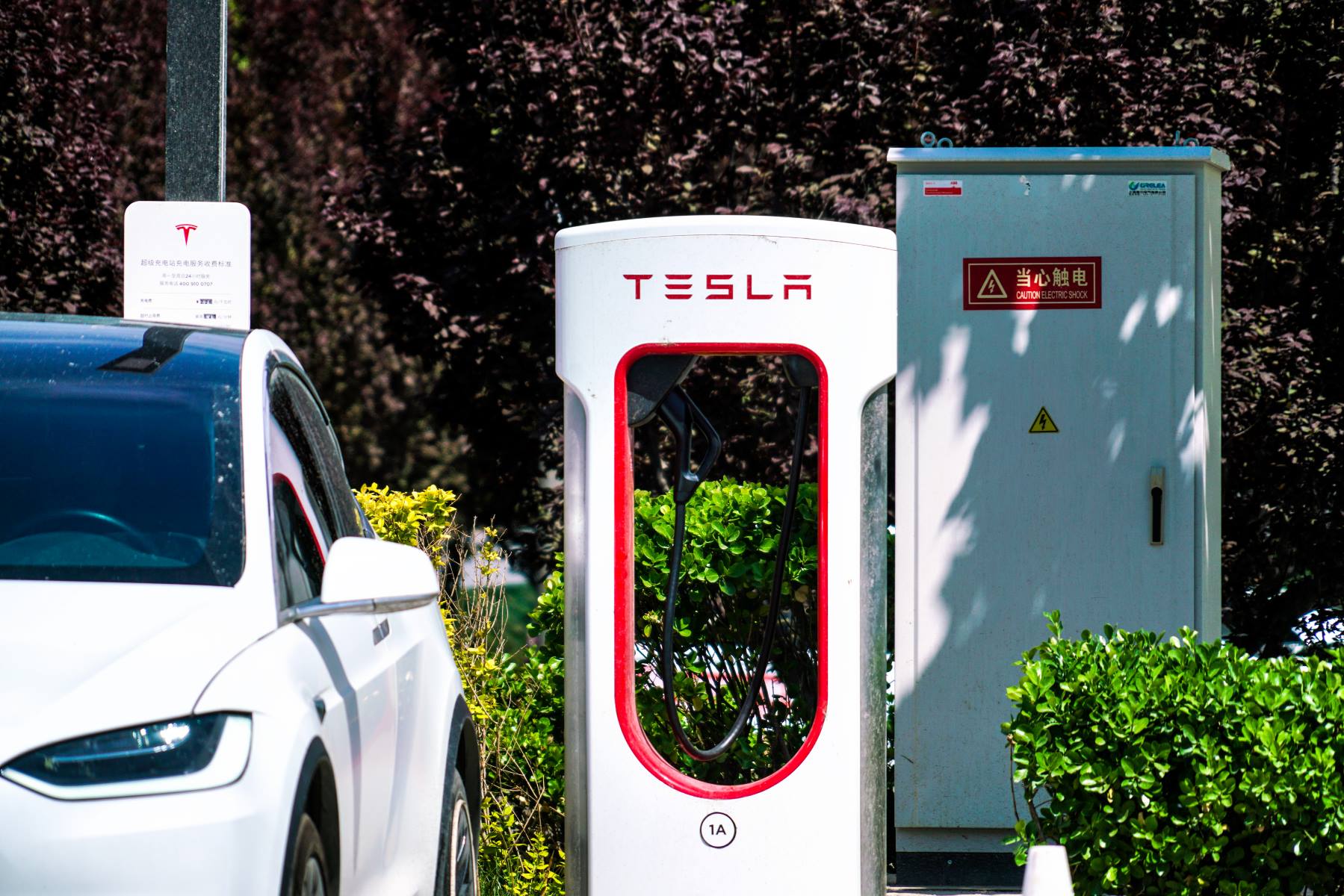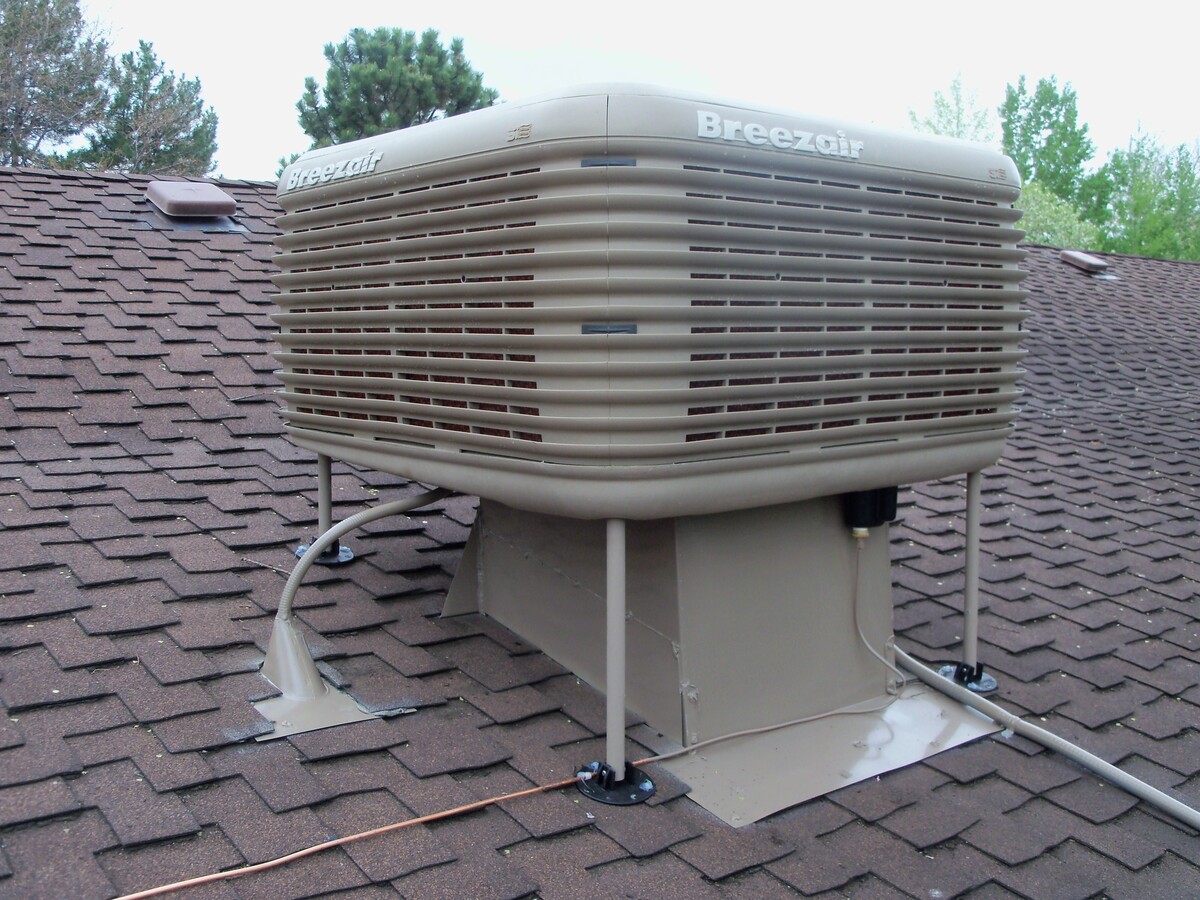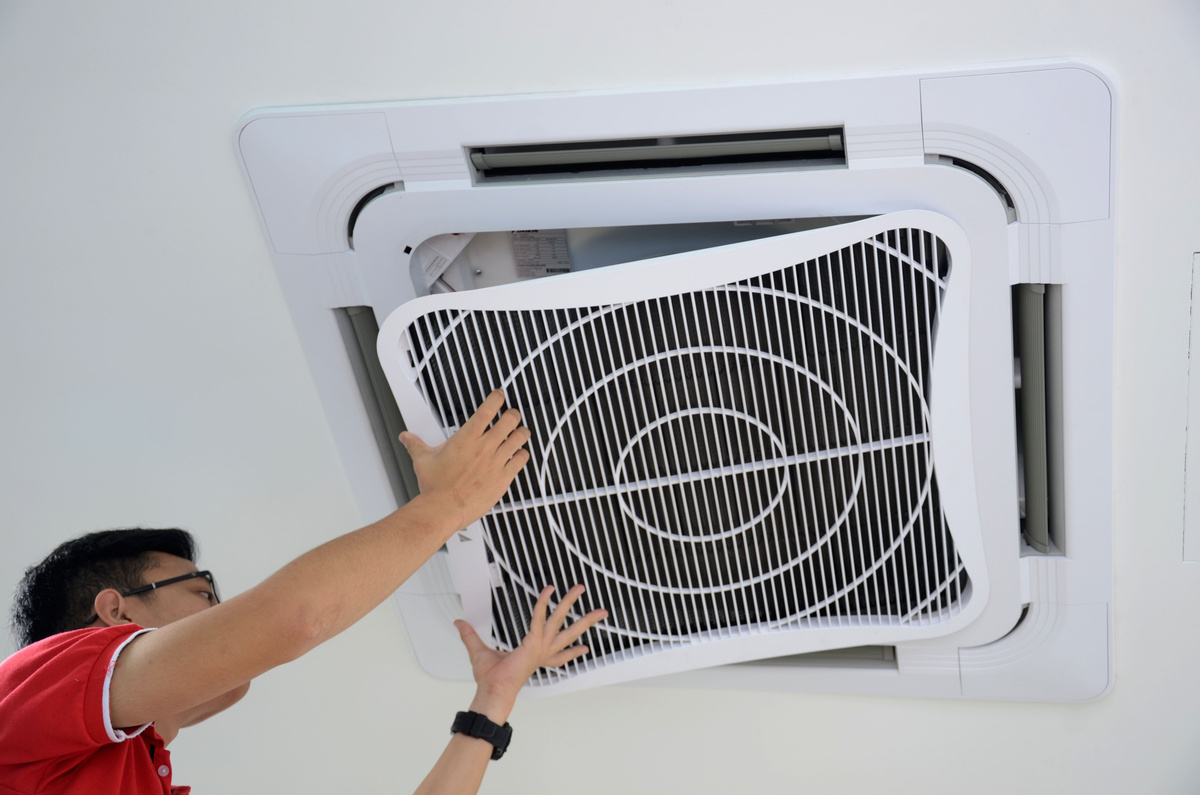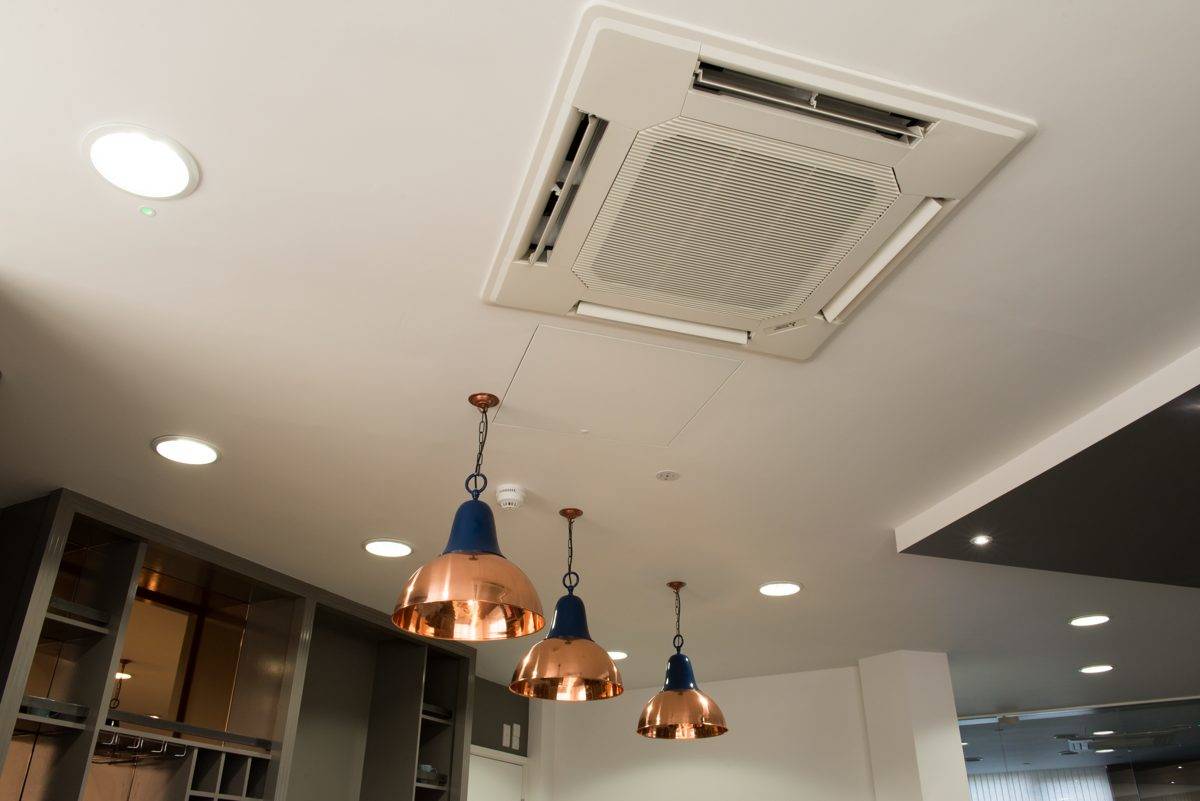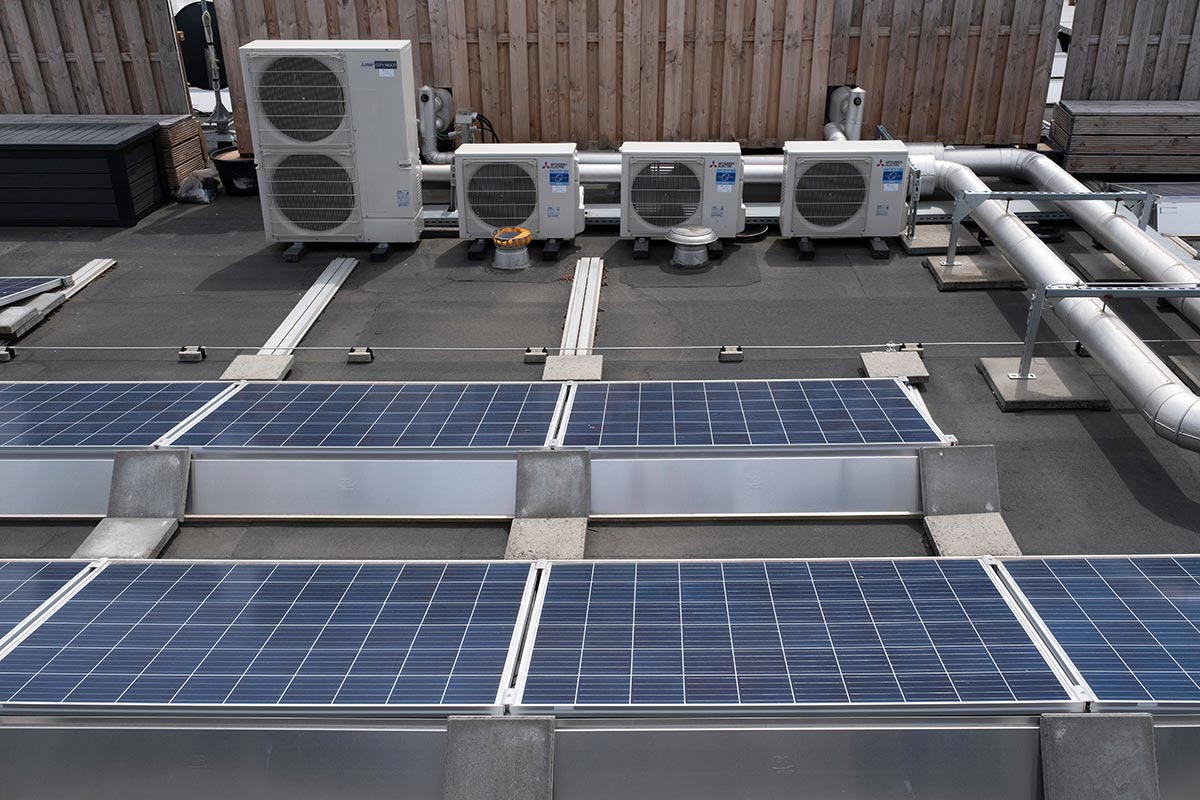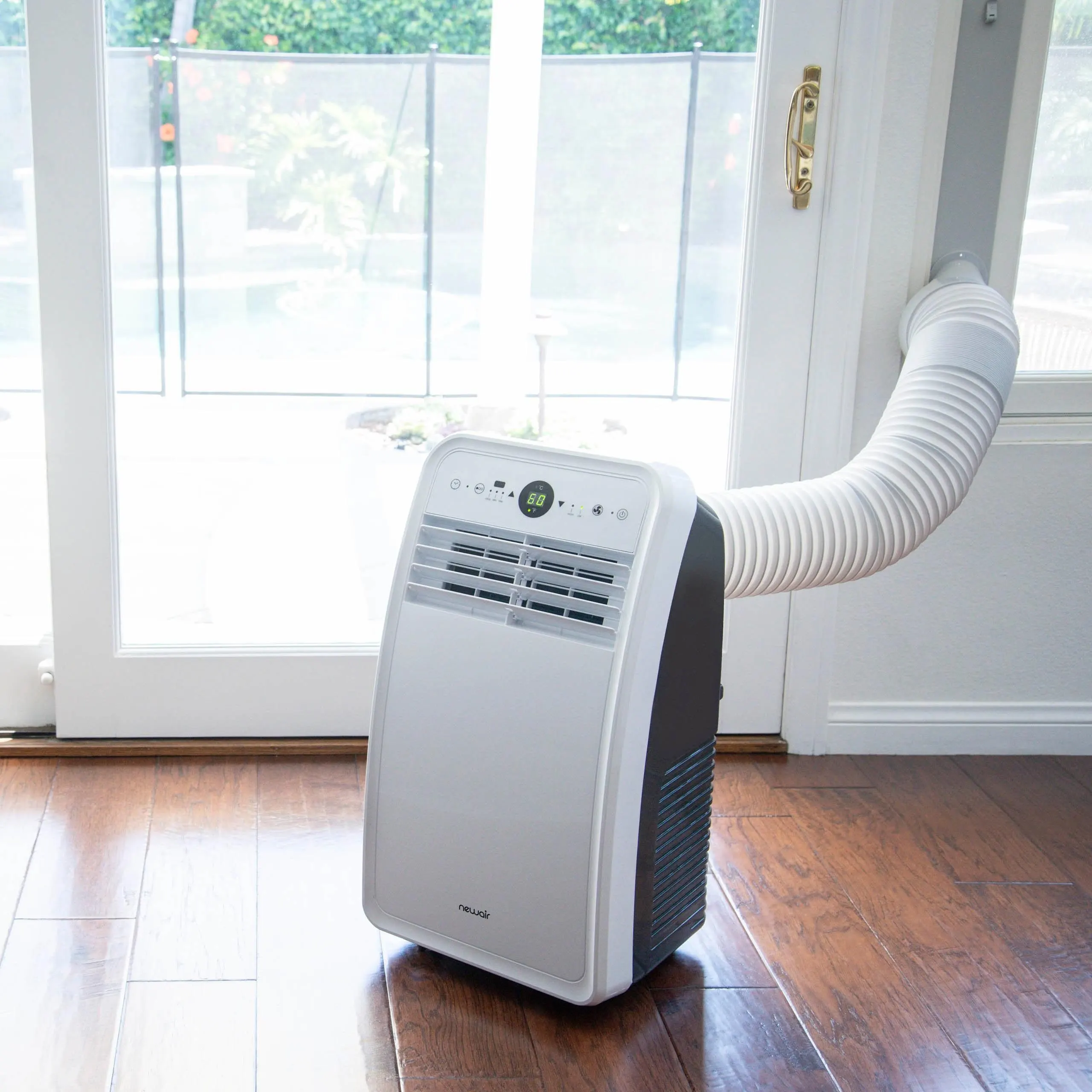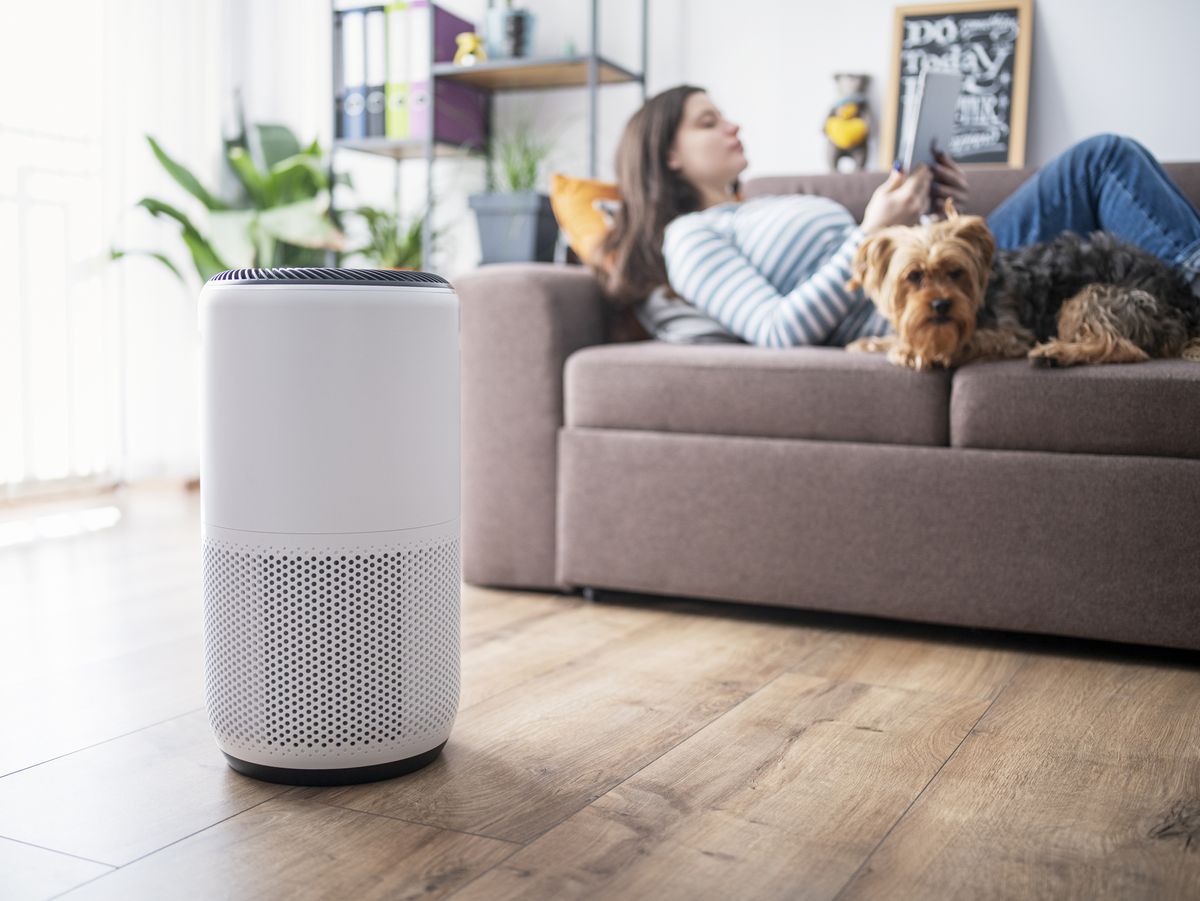Home>Home Maintenance>How Does The Air Conditioning Work In A Tesla


Home Maintenance
How Does The Air Conditioning Work In A Tesla
Modified: August 26, 2024
Learn how the air conditioning system in a Tesla works and ensures optimal home maintenance, delivering efficient cooling and comfort.
(Many of the links in this article redirect to a specific reviewed product. Your purchase of these products through affiliate links helps to generate commission for Storables.com, at no extra cost. Learn more)
Introduction
The air conditioning system in a Tesla is an essential component that ensures optimal comfort for both the driver and passengers. With Tesla’s focus on sustainability and energy efficiency, their air conditioning system is built to provide effective cooling and heating while minimizing energy consumption.
In this article, we will delve into the intricacies of how the air conditioning works in a Tesla, exploring its various components, the cooling and heating process, air distribution, climate control settings, and more. Whether you own a Tesla or are simply interested in its innovative technology, this article will provide you with a comprehensive understanding of the air conditioning system in Tesla vehicles.
Key Takeaways:
- Tesla’s air conditioning system uses advanced technology and smart features to provide efficient cooling and heating, ensuring a comfortable and healthy cabin environment for drivers and passengers.
- The air distribution and climate control settings in Tesla vehicles allow for personalized comfort, while energy-saving features and maintenance tips help optimize the system’s performance and longevity.
Read more: How Does Marine Air Conditioning Work
Overview of Tesla Air Conditioning System
The Tesla air conditioning system is designed to provide a comfortable and pleasant environment for occupants, regardless of the outside climate. It utilizes a combination of advanced technology and sustainable practices to ensure efficient cooling and heating.
One of the standout features of the Tesla air conditioning system is its integrated HEPA filtration system, which not only circulates cool or warm air but also removes pollen, particulate matter, and even harmful contaminants from the air inside the vehicle. This ensures a clean and healthy cabin environment.
The air conditioning system in a Tesla consists of several key components, including a compressor, condenser, evaporator, and refrigerant lines. These components work together to regulate the temperature inside the vehicle and maintain a comfortable atmosphere for all occupants.
Moreover, Tesla vehicles are equipped with smart climate control technology, which allows drivers and passengers to customize their individual comfort settings. This includes adjusting the temperature, fan speed, and air distribution to cater to their preferences. Additionally, Tesla’s advanced software continuously learns from user behavior and adjusts the climate control settings accordingly to optimize energy efficiency.
Now that we have a general overview of the Tesla air conditioning system, let’s dive deeper into each of its components and understand how they contribute to providing a comfortable and enjoyable driving experience.
Components of Tesla Air Conditioning System
The Tesla air conditioning system consists of several crucial components that work together to cool or heat the cabin of the vehicle. Understanding these components will give you insight into the intricate workings of the system.
1. Compressor: The compressor plays a vital role in the air conditioning system. It compresses the refrigerant gas, increasing its temperature and pressure before it is sent to the condenser.
2. Condenser: The condenser is responsible for releasing heat from the refrigerant. It is located at the front of the vehicle and resembles a radiator. As the refrigerant passes through the condenser, it loses heat and transforms into a high-pressure liquid.
3. Evaporator: The evaporator is located inside the cabin, usually behind the dashboard. It acts as a heat exchanger and is responsible for cooling the air. The high-pressure liquid refrigerant enters the evaporator, where it evaporates and absorbs heat from the surrounding air, cooling it down in the process.
4. Refrigerant Lines: These are a network of pipes that carry the refrigerant throughout the air conditioning system, allowing it to flow between the compressor, condenser, and evaporator.
5. Expansion Valve: The expansion valve is located between the condenser and the evaporator. It regulates the flow of the refrigerant, reducing its pressure and allowing it to expand as it enters the evaporator for the cooling process.
In addition to these main components, Tesla’s air conditioning system also incorporates a filter system, including a HEPA filter, to remove particles and impurities from the air. This ensures that the cabin air remains clean and safe for occupants to breathe.
By understanding the role of each component in the Tesla air conditioning system, you can appreciate the complexity and precision that goes into creating a comfortable and efficient climate control system for your Tesla vehicle.
Cooling Process in a Tesla
The cooling process in a Tesla is designed to keep the cabin temperature at a comfortable level, even on hot summer days. Understanding how this process works will give you insight into the technology behind the cooling capabilities of a Tesla vehicle.
When you activate the air conditioning system, the first step is for the compressor to kick in. The compressor compresses the gaseous refrigerant, significantly increasing its temperature and pressure. This hot, high-pressure gas then flows to the condenser, located at the front of the vehicle.
As the refrigerant enters the condenser, it releases heat and transforms into a high-pressure liquid. The heat from the refrigerant is dissipated into the surrounding air, resulting in a cooling effect.
The liquid refrigerant then moves to the expansion valve, which reduces its pressure and allows it to expand. This expansion causes the refrigerant to rapidly cool down, leading to a drop in temperature.
The cooled refrigerant now enters the evaporator, which is located inside the cabin of the Tesla. As the warm air from the cabin passes over the evaporator, the refrigerant absorbs the heat from the air, cooling it down in the process.
The cooled air is then circulated back into the cabin through the air vents, providing a refreshing and cool atmosphere for the occupants. At the same time, the hot refrigerant, now in gaseous form, is sent back to the compressor to repeat the cooling process.
This continuous cycle of compressing, condensing, expanding, and evaporating the refrigerant enables the Tesla air conditioning system to effectively cool the cabin even in high temperatures.
Additionally, the Tesla air conditioning system features advanced software that optimizes energy efficiency. It takes into account factors such as the outside temperature, cabin temperature, and user preferences to regulate the cooling process, ensuring that energy is used efficiently without compromising on comfort.
Overall, the cooling process in a Tesla is a sophisticated and efficient system that keeps you comfortable during your drive, no matter how hot it may be outside.
Heating Process in a Tesla
The heating process in a Tesla is designed to provide warmth and comfort to the cabin, especially during cold winter months. Understanding how this process works will give you insight into the technology behind the heating capabilities of a Tesla vehicle.
When you activate the heating system, the first step is the circulation of the car’s coolant. The coolant, a mixture of water and antifreeze, absorbs heat from the motor, power electronics, and battery pack. This heated coolant is then directed to the heating unit.
The heating unit consists of a heat exchanger, commonly referred to as the heater core. As the hot coolant passes through the heater core, it heats up the surrounding air that is blown across it.
The heated air is then directed into the cabin through the air vents, providing a warm and cozy atmosphere. The temperature can be adjusted and controlled using the climate control settings in the Tesla’s touchscreen display or through voice commands.
In addition to using the heated coolant for cabin heating, Tesla vehicles also feature electric resistance heating. This technology utilizes an electric heating element to produce heat. When the heating system is activated, the electric heating element heats up, and the warm air is distributed throughout the cabin.
Tesla vehicles are equipped with a smart climate control system that learns from user behavior and optimizes energy efficiency. The system takes into account factors such as the outside temperature, cabin temperature, and user preferences to regulate the heating process effectively while minimizing energy consumption.
In colder climates, Tesla vehicles have a cold weather package option that includes features like heated seats, heated steering wheel, and heated side mirrors, which further enhance the comfort and warmth during winter drives.
By combining the use of heated coolant and electric resistance heating, Tesla vehicles provide an efficient and effective heating system to keep the cabin warm during cold weather conditions. Whether you’re taking a short drive or a long winter road trip, the heating system in a Tesla ensures that you stay cozy and comfortable throughout the journey.
The air conditioning in a Tesla works by using a heat pump system to transfer heat from inside the car to outside, or vice versa, depending on whether you want to cool or heat the interior. This system is more energy efficient than traditional air conditioning systems.
Read more: How Does AC Work In A Tesla
Air Distribution in a Tesla
The air distribution system in a Tesla plays a crucial role in ensuring that the airflow is directed effectively to provide optimal comfort for all occupants in the cabin. Understanding how air is distributed throughout the vehicle will give you insight into the technology behind the ventilation system in a Tesla.
Tesla vehicles are equipped with a sophisticated air distribution system that allows occupants to customize the airflow according to their preferences. The system includes various air vents strategically placed throughout the cabin, ensuring that airflow is evenly distributed.
One of the primary components of the air distribution system is the air vents, which can be found in the dashboard, on the center console, and sometimes in the rear of the vehicle. These vents can be opened, closed, and adjusted to control the direction and intensity of the airflow.
In addition to the manual adjustments, Tesla vehicles feature a smart climate control system that allows users to customize the air distribution settings through the touchscreen display or voice commands. Drivers and passengers have the flexibility to choose the airflow direction, whether it’s to the face, feet, windshield, or a combination of these.
Tesla’s ventilation system also includes a feature called “Bioweapon Defense Mode,” which relies on the integrated HEPA filtration system to provide clean and filtered air to the cabin. This mode creates a positive pressure inside the vehicle, preventing external pollutants from entering. The filtered air is then distributed through the air vents, ensuring a healthy and comfortable environment for occupants.
Furthermore, Tesla vehicles offer a unique feature called “Ventilation Mode.” This mode uses sensors to intelligently detect the presence of occupants and direct airflow only to the occupied seats, avoiding unnecessary energy consumption.
The intelligent air distribution system in a Tesla ensures that airflow is directed precisely and efficiently throughout the cabin. Whether you prefer a gentle breeze or a powerful blast of air, the air distribution system in a Tesla allows you to customize the airflow to your liking, providing a comfortable and pleasant driving experience.
Climate Control Settings in a Tesla
Tesla vehicles offer a range of climate control settings that allow drivers and passengers to customize their comfort experience according to their preferences. These settings provide flexibility and convenience, ensuring an enjoyable driving experience no matter the weather conditions. Let’s explore some of the climate control settings available in a Tesla.
1. Temperature Control: Tesla vehicles allow users to set their desired cabin temperature using the touchscreen display or voice commands. Drivers and passengers can adjust the temperature according to their comfort level, ensuring a pleasant and cozy environment.
2. Fan Speed and Airflow: The fan speed control allows users to adjust the intensity of the airflow within the cabin. Whether you prefer a gentle breeze or a powerful blast of air, you can customize the fan speed to your liking. Additionally, Tesla vehicles offer the option to control the direction of airflow by adjusting the air vents.
3. Seat Heating and Cooling: Tesla vehicles are equipped with heated seats, allowing occupants to experience warmth during colder weather. Some models also offer ventilated seats, providing cooling airflow during hotter days. The seat heating and cooling settings can be adjusted individually for each seat, offering personalized comfort for everyone in the vehicle.
4. Steering Wheel Heating: In colder climates, Tesla vehicles feature a heated steering wheel option. This allows the driver to enjoy the warmth in their hands, making the driving experience more comfortable and cozy.
5. Defrost and Defog: Tesla vehicles offer a defrost and defog feature to quickly clear the windshield and side windows from frost, ice, and condensation. This ensures optimal visibility and safety during cold weather conditions.
6. Preconditioning: Tesla vehicles allow users to pre-condition the cabin before entering the vehicle. You can use the Tesla mobile app or set a scheduled departure time to warm up or cool down the cabin, ensuring a comfortable temperature as soon as you sit inside the car.
These climate control settings in a Tesla provide users with a high level of flexibility and customization, allowing for a personalized and comfortable driving experience in all weather conditions. Whether it’s adjusting the temperature, fan speed, or utilizing seat heating and cooling features, Tesla provides the tools to create the ideal climate for an enjoyable journey.
Energy Efficiency of Tesla Air Conditioning System
Energy efficiency is a key aspect of Tesla’s design philosophy, and the air conditioning system is no exception. Tesla vehicles are engineered to maximize the efficiency of their air conditioning system to minimize energy consumption without compromising on comfort. Let’s explore the energy-saving features and practices implemented in Tesla’s air conditioning system.
1. Smart Climate Control: Tesla vehicles are equipped with a smart climate control system that continuously learns from user behavior and adjusts the settings accordingly. By analyzing factors such as the outside temperature, cabin temperature, and user preferences, the system optimizes the cooling and heating process to reduce energy waste.
2. Advanced Software: The advanced software in Tesla vehicles ensures that the air conditioning system operates efficiently. It regulates the compressor speed, fan speed, and other variables based on real-time data, ensuring that energy is used only when necessary.
3. Intuitive Air Vent Control: Tesla’s air vents allow for precise control over the direction and intensity of airflow. This enables users to direct the cool or warm air precisely where it is needed, reducing the need to overcool or overheat the entire cabin, thereby conserving energy.
4. Energy-Saving Features: Tesla vehicles offer energy-saving features such as “Ventilation Mode” and “Keep Climate On” that minimize energy consumption. Ventilation Mode directs airflow only to the occupied seats, while Keep Climate On efficiently maintains the cabin temperature when the vehicle is parked, without excessive energy draw.
5. HEPA Filtration System: Tesla’s integrated HEPA filtration system not only purifies the air but also contributes to energy efficiency. By removing pollutants and contaminants from the cabin air, the system reduces the strain on the air conditioning system, allowing it to operate more efficiently.
These energy-efficient practices and features collectively contribute to reducing the energy consumption of the air conditioning system in Tesla vehicles. Not only does this benefit the environment by reducing greenhouse gas emissions, but it also extends the battery range of the vehicle, allowing for longer trips before needing to recharge.
By prioritizing energy efficiency, Tesla continues to innovate and lead the way in sustainable transportation, ensuring their vehicles deliver both exceptional performance and minimal environmental impact.
Maintenance and Troubleshooting of Tesla Air Conditioning System
Maintaining the air conditioning system in your Tesla is essential to ensure optimal performance and longevity. Regular maintenance and troubleshooting can help you identify and address any issues that may arise. Let’s explore some important maintenance tips and troubleshooting steps for the Tesla air conditioning system.
1. Regular Filter Maintenance: The air conditioning system in a Tesla relies on filters to ensure clean air circulation. Regularly checking and cleaning or replacing the filters is important to maintain proper airflow and prevent the accumulation of dust and debris. Refer to your vehicle’s manual for instructions on how to access and maintain the filters.
2. Check for Refrigerant Leaks: If you notice a decrease in cooling performance or unusual odors, it may indicate a refrigerant leak. You should promptly inspect the system for any signs of leakage and have it addressed by a professional if needed. Refrigerant leaks should be repaired by an authorized Tesla service center to ensure proper handling.
3. Verify Temperature Discrepancies: If you experience inconsistencies in temperature distribution throughout the cabin, it is worth checking the air vents and their settings. Ensure that the vents are not blocked and adjust the airflow direction as needed. If the issue persists, it may require professional diagnostics to identify and resolve any underlying mechanical problems.
4. Test Both Cooling and Heating Modes: Periodically test the cooling and heating modes of your Tesla air conditioning system to ensure they are functioning correctly. This can be done by adjusting the temperature settings, fan speed, and airflow direction while monitoring the performance. If you detect any irregularities or lack of function, it is advisable to seek professional assistance for further evaluation.
5. Software Updates: Tesla vehicles receive regular software updates that can include improvements and bug fixes related to the air conditioning system. Make sure to keep your vehicle up to date with the latest software to benefit from any potential enhancements or system optimizations.
6. Professional Maintenance: For any complex issues or if you are unsure about the condition of your Tesla air conditioning system, it is recommended to schedule maintenance with an authorized Tesla service center. They have the expertise and specialized equipment to diagnose, repair, and maintain the air conditioning system effectively.
Remember, it is important to follow the manufacturer’s guidelines and consult your Tesla vehicle’s manual for specific maintenance instructions and recommendations for your particular model. By staying proactive and addressing any concerns promptly, you can ensure that your Tesla air conditioning system remains in top condition, providing optimal comfort and performance for your driving experience.
Read more: How Does Geothermal Air Conditioning Work
Conclusion
The air conditioning system in a Tesla is a vital component that contributes to the overall comfort and driving experience. Designed with a focus on energy efficiency, sustainability, and user comfort, Tesla’s air conditioning system incorporates advanced technology and smart features to provide optimal cooling and heating.
From the integrated HEPA filtration system that ensures clean and healthy cabin air to the customizable climate control settings that allow users to personalize their comfort, Tesla vehicles offer a superior air conditioning experience.
Whether it’s the cooling process that efficiently cools the cabin on a hot summer day or the heating process that keeps you warm during chilly winter months, the Tesla air conditioning system is engineered to deliver exceptional performance.
Maintaining the air conditioning system through regular upkeep and troubleshooting is important to ensure its continued efficiency and prevent any potential issues. Regular filter maintenance, checking for refrigerant leaks, and verifying temperature distribution are key maintenance steps that help maintain the system’s performance.
As Tesla vehicles continue to evolve with software updates and advancements, the air conditioning system benefits from optimizations and enhancements that further enhance its efficiency and functionality.
In conclusion, the air conditioning system in a Tesla is a testament to the company’s commitment to providing sustainable transportation and exceptional user experience. Whether you’re driving in extreme temperatures or seeking a comfortable climate during your journey, the Tesla air conditioning system is designed to meet your needs and provide a luxurious and enjoyable driving experience.
Frequently Asked Questions about How Does The Air Conditioning Work In A Tesla
Was this page helpful?
At Storables.com, we guarantee accurate and reliable information. Our content, validated by Expert Board Contributors, is crafted following stringent Editorial Policies. We're committed to providing you with well-researched, expert-backed insights for all your informational needs.
